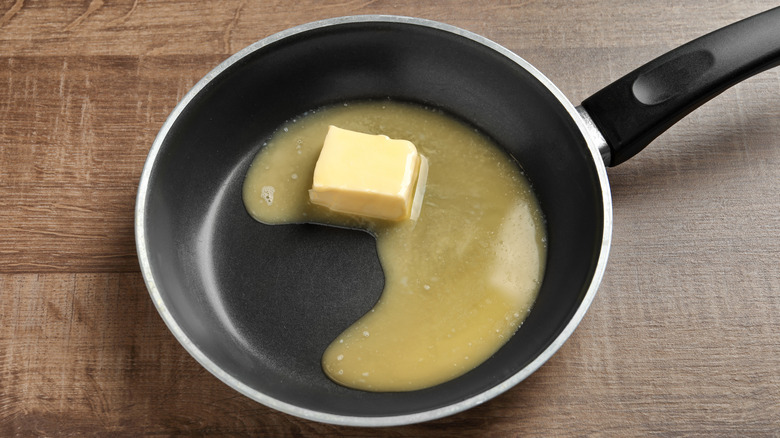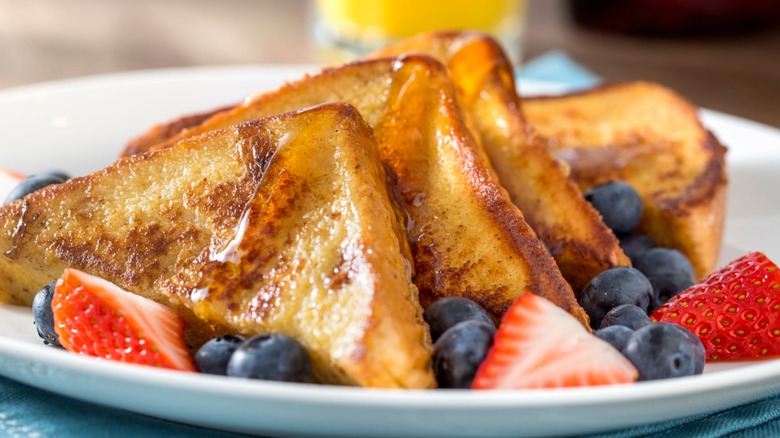When Cooking French Toast, Butter Isn't Always Your Friend
For anyone who's ever made French toast at home, you know that it's a pretty simple dish. It's the perfect quick and easy weekday breakfast, or you can dress it up on weekends for an elaborate brunch with your family and friends. And while there are endless ways to flavor and cook French toast — in the oven, on the grill, even in a slow cooker – when it comes to pan or griddle cooking, one thing remains constant: Butter is the traditional cooking medium.
Why butter, though? Well, because it's delicious. From pancakes to scrambled eggs, there's a reason why so many breakfast dishes utilize butter. And for French toast, the buttery flavor is key, whether you like your French toast served classic style with a dusting of powdered sugar or topped with fresh berries and whipped cream.
However, butter might not be your best choice when it comes to actually cooking French toast.
Cook with oil, serve with butter
As it turns out, oil actually makes for a better cooking medium than butter for your French toast (via Cooking Light). There are many reasons why cooking with oil is better than cooking with butter. First of all, oil has a higher smoke point than butter, which means that it can withstand higher temperatures without burning. This is important because you want to make sure your French toast is cooked through without being burnt or smoky. Secondly, oil doesn't solidify when it cools, so you don't have to worry about it becoming hard and difficult to work with during cleanup. Lastly, oil gives your French toast a light and a crispy outer crust that is absolutely delicious.
But that doesn't mean you can't top your French toast with butter after cooking it. In fact, many people enjoy adding butter to their slices after flipping them while still in the pan, allowing the butter to melt and seep into their French toast as it finishes cooking. So while cooking with oil is the way to go, don't be afraid to add a bit of butter when serving your French toast.

